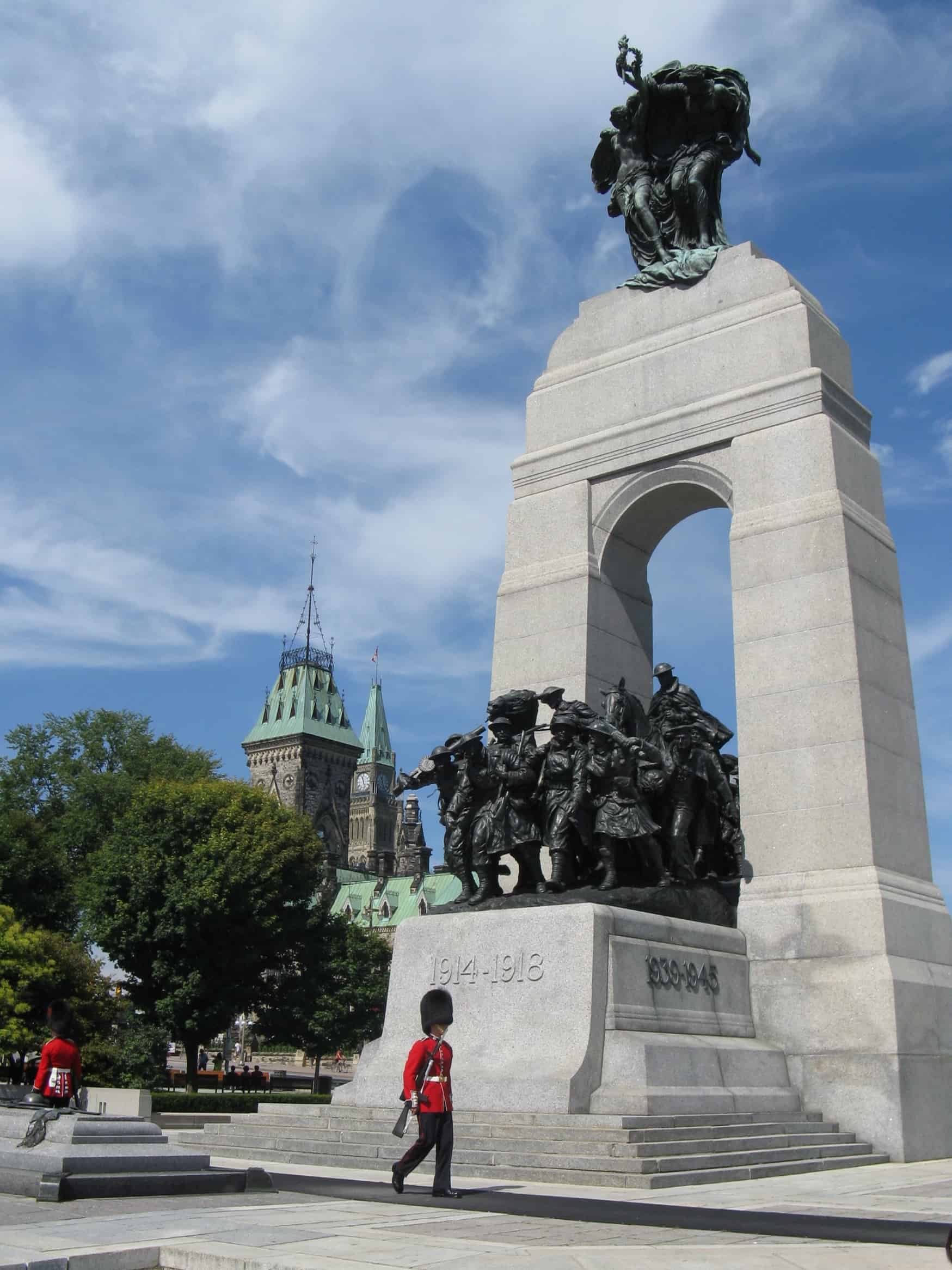The marks of the First and Second World Wars are still visible in Canada today. Sometimes the marks are literal, the remnants of torpedo damage from U-Boats blockading Newfoundland harbours or sliding up and down the St. Lawrence River. Some of the marks are figurative, left in the family and cultural traditions of a population that lost large fractions of its young men. Today, travellers can visit the sites of Canadian troops’ most important struggles, and the sites which memorialize those hardships, while reflecting on the efforts that made our freedom possible today.
Juno Beach, France – Second World War

Possibly the most famous engagement of the war was the attack on Omaha Beach, at Normandy. The “D-Day” attack was an all-out rush from landing troopships to the safety of the high beach. Everywhere in-between was open and vulnerable. Canadian troops landed on Juno Beach, which is adjacent to Omaha Beach, and stormed the gun emplacements some three hundred meters away while the guns fired down at them and mines exploded all over the beach. Almost 400 Canadians died that day, and almost 600 more were wounded, but when the battle was over the Canadian troops had pushed further into France than any other detachment. Today, the site of the D-Day invasion is open to visitors, and is peppered with plaques and other historical material.
Dieppe, France – Second World War

The attack on Dieppe by a largely Canadian force in 1942 was the first and only major assault into into France prior to the attack on Normandy. Dieppe was a similar plan, but the town of Dieppe was significantly closer to the field of battle, making bombardment a tricky proposition. In an effort to minimize civilian casualties in the city, the commander called off the large guns on his naval vessels, which left 6000 Canadian and British troops with no support. When they were eventually forced to withdraw from the engagement, Dieppe is thought to have been the turning point in certain Allied military strategies, and it is credited with the lessons that allowed D-Day to succeed. Today the site is open to the public, and several local companies run historical tours.
Vimy Ridge – First World War

Vimy Ridge has an interesting history due mostly to the soft, clay-rich earth into who it is carved. The soil was perfect for tunnelling, and it took very little time for German and eventually Allied forces to begin digging tunnels to harass the enemy. As a result, the area became a famous quagmire, and the site of a seemingly never-ending battle fraught with ambushes and mine shaft collapses. The Battle of Vimy Ridge was the effort to end that stalemate one and for all, and it was also the first time all four Canadian divisions took the field of battle as a unit. In conjunction with British and Australian troops, Canadians took a series of fortifications (including the infamous ‘Pimple’ atop its highest ridge). The engagement was over in less than a week, with heavy casualties on both sides but a decisive Allied victory. Today Vimy Ridge is the site of Canada’s primary overseas war memorial, a huge and lovingly crafted tribute to the Canadians who died liberating France.
Passchendaele, Belgium – First World War

Belgium is a famously friendly country for travelling Canadians, and the First and Second Battles of Passchendaele are a big part of the reason. The second battle, which was to be the decisive one, saw over 15,000 Canadian casualties (deaths and injuries) over a gruelling three-week campaign. There were four distinct phases to the attack, each more exhausting than the last for attacking troops, who had to sleep in muddy holes and live in constant fear of intermittent machine gun fire. The attack was ultimately successful in capturing most of the German emplacements along the high ground overlooking the coast. The Belgians in Passchendaele built the Passchendaele Memorial to honour the thousands of Canadians who died there.
Canadian National War Memorial, Ottawa

At the end of the Second World War, Canada had the world’s fourth largest air-force and its third-largest naval fleet. Canada is not a country known for military might, but history has shown the country’s willingness to rise in opposition to threats abroad. The Canadian National War Memorial is a reminder of the sacrifices made by the men and women of the Canadian forces in the ongoing effort to protect the Canadian way of life. In 2000, The Canadian Tomb of the Unknown Soldier was added to the memorial, officially expanding its previously World War-focus to include every Canadian solder to fight for the cause.


